![]()
The Maypole of the Manor of Duxbury.
1. Puritan William Bradford of New England America denounces the Maypole.
2. Between 1570 and 1630, Maypoles were banned?

In the hand written notes of Thomas Standish Esquire - Lord of the Manor of Duxbury the location of the Duxbury May Pole is given.
(notes dated 26th October 1577)
Lancashire Record Office DP 397/8/46
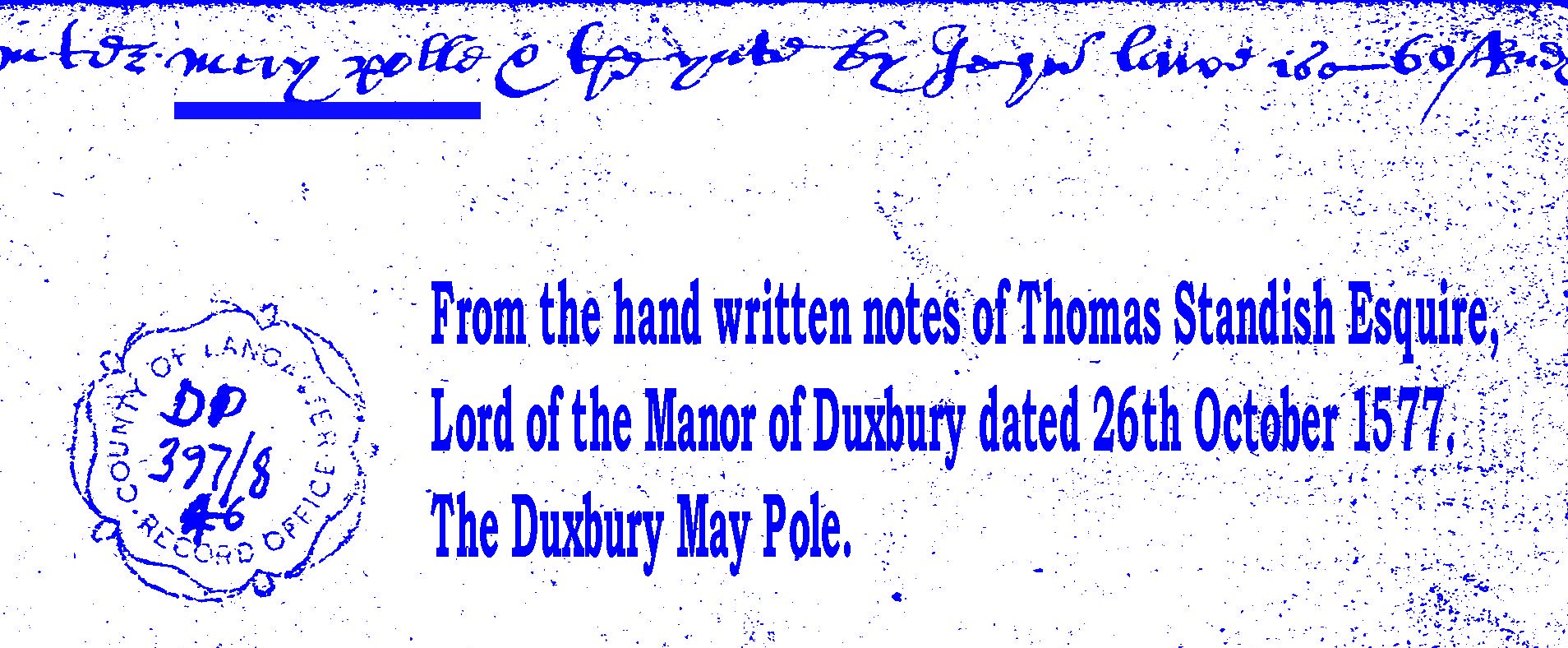
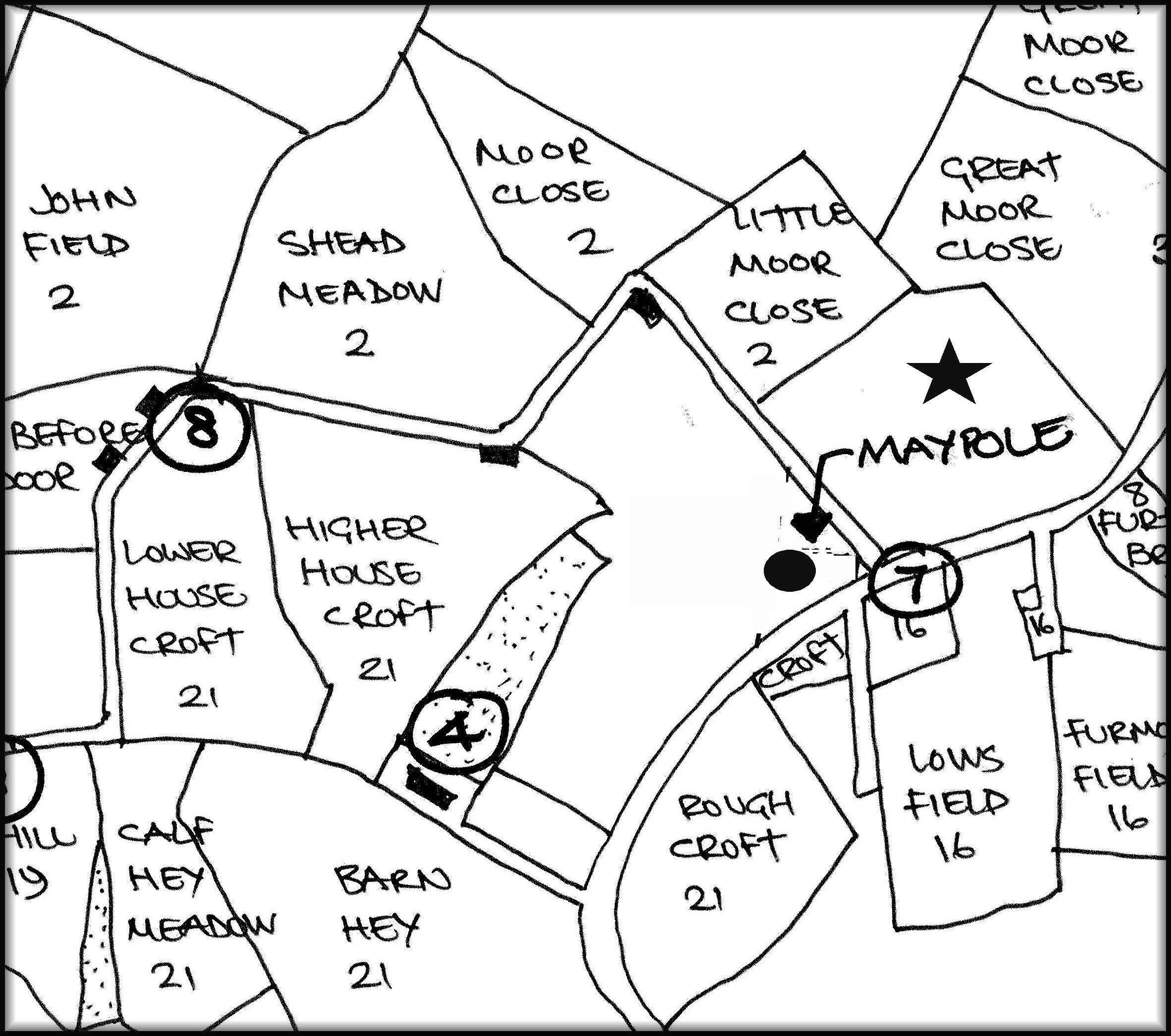

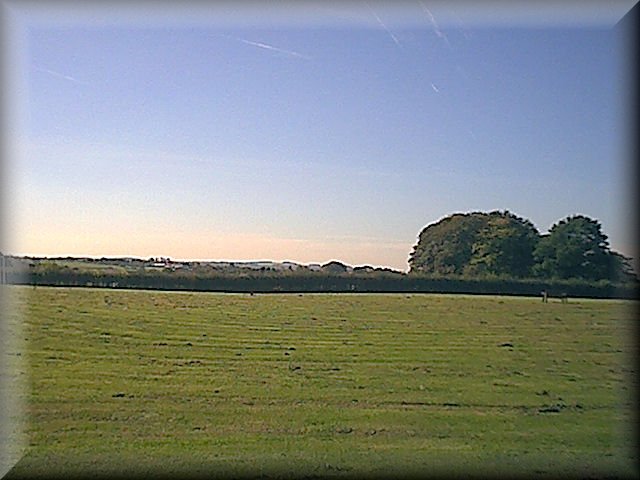
2007. The site of the Duxbury Maypole
In 1577 it is known as one of the Shead fields East of Farnworth House - West of the gate of John Lawe.

May Celebrations – Maypole – May Queen – Morris dancers.

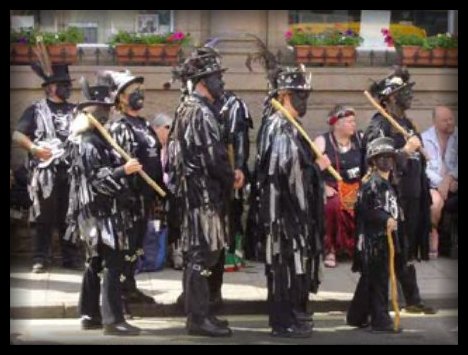
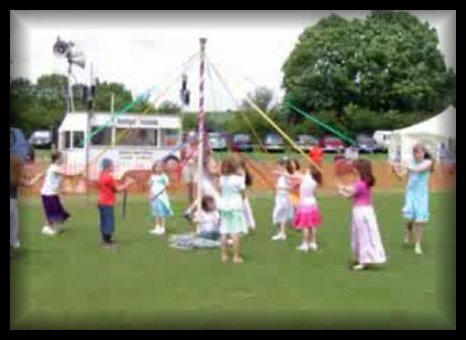
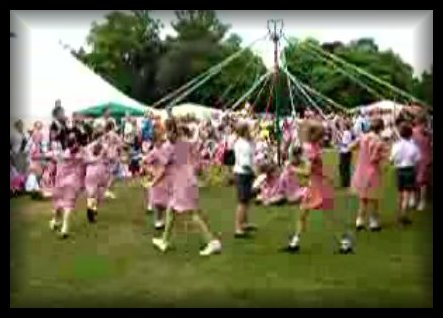

Originally the Maypole represented a phallic symbol or a Pagan symbol of Fertility celebrating sexuality and life to the 'Horned God' which was decorated mostly with flowers and wild garlands . The Horned God image is similar to the Greek/Roman pan; he is a symbol of fertility and the life for the forest, including the hunt, which supplied ancients with their livelihood. Later moving away from Pagan worship it was revived by and became Roman in origin, who used it in some ceremonies connected with the worship of Maia, the mother of Mercury, and the presiding goddess ofthat month.
For many centuries it was the chief dance of rustic England. The ancient Britons erected Maypoles even before Claudius and the Roman invasion
(AD 43) and adorned them with flowers. There are also the Yggdrasil Norse tree
and Irish Bile Pole versions.
The
May Dance until the late 1800s was popular in the rural districts of England
where it achieved it's finishing non- pagan touches, while in many places
throughout the world it was still widely danced. Other countries of Europe also
had their dances for celebrating the first of May.
The
May Dance of ancient origin, as it dates back to the dancing at the "Feast
of Flora." Flora was the goddess of flowers, and festivals in her honour
were held the last of April and the first of May (as in Robin Hoods Day).
Originally, in celebrating the rites of spring, the girls entering womanhood
would be gathered up and allowed to participate in the making of the Maypole
and its dances. Each Village or town would get a ribbon with a unique pattern
which were simple in earlier time to more elaborate designs and fabrics with a
May Blossom placed atop the pole. During the dance the younger girls were on
the inside and the older on the outer rim. The older girls would form some of
the prettiest rings around the Maypole and if the ribbon did not break would
bring great luck upon the village.
When
the Festival came into its prime, all the young men and maidens of the country
round were wont to rise at midnight and tie them to the woods, and returning
before the sun was up, laden and bedecked with flowers, evergreen, and boughs,
festooned their persons with the spoil. After sun rise they join the procession
led by Jack O' the Green, who was fantastically arrayed with flowers and
ribbons, and learning a red covered with flowers and streamers of every hue,
and furnished near the top with hoops twined with flowers and evergreen, and
crossing each other vertically. Furnished near the top with hoops twined with
flowers and evergreen, and crossing each other vertically.
After this personification came the Morris Dancers, six maids and as many swains linked hand in hand and fancifully arrayed in ribbons of red and blue, with bells on their ankles and literally covered with flowers. Then came the Maypole Dancers with hands joined, two and two. After these walked the tall and graceful maid Marion, escorted by Friar Tuck, she decorated gaily from head to foot with flowers, and he grotesquely attired in a monkish habit, and like the rest, bedecked with flowers. Then followed six pairs of Morris Dancers again, and immediately after them marched the master of ceremonies, Robin Hood (1160-1247) and by his side the Queen of May, the fairest maiden of the country side, as yet uncrowned, but attended by six young maids all dressed in white and covered with garlands. (There were many other customs connected with Mayday, and the whole affair was conducted with much mock ceremony; two girls were chosen by vote to preside over the festivities, one being called Lady Flora, queen of the flowers, and the other Lady May, but in later times only one sovereign was elected, the Queen of the May.) Then again came the rest of the Maypole Dancers, who closed the procession, which was preceded by a band of music. After marching through the principal streets in the village, they gathered at the Maypole, and spent the remainder of the day in dancing and various games around it.
Puritan William Bradford (a New
Englander) wrote about his dislikes (biblical reasoning) of the Maypole as done
to "Wanton Ditties" and the pole being "a stynching Idol",
he also mentions the worse practice of the "Sundry rimes and verses"
associated with this idolistic dance.
The Maypole was from twelve to sixty feet in height, usually made from a tree and is bestudded with pins to the top, which are hung with garlands and streamers. On the Northwest side of a ring formed by a rope stretched around about twenty feet from the base of the pole, they now proceed to crown the May-Queen, who is seated on a throne raised on a platform, on each side of which, seated on stools, are her pages and attendants. Then begins the May-Queen's reign. She awards the prizes to the most graceful dancers and to those who excel in the other games, and has absolute power to reward or punish whomsoever she pleases.
Between 1570 and 1630, Maypoles were banned in many parts of England. However Thomas Standish Esquire Lord of the Manor of Duxbury was quite content to record the existence of the Duxbury Manor Maypole in his notes dated 26th October 1577.
Hostility
towards maypoles, emanating from evangelical Protestants, grew, first
manifesting itself significantly during the Reformation of Edward VI, when a
preacher denounced the Cornhill maypole as an idol, causing it to be taken out
of storage, sawn up, and burned. Under Mary and Elizabeth I this opposition to
traditional festivities lacked government support, while Elizabeth is recorded as
being fond of them, but Protestant pressure to remove maypoles, as a symbol of
the mixed-gender dancing, drunkenness, and general merry-making on Sundays that
they opposed, grew nontheless. Between 1570 and 1630, maypoles were banned from
Banbury, Bristol, Canterbury, Coventry, Doncaster, Leicester, Lincoln, and
Shrewsbury; and there is no historical evidence for their use inside the city
limits of London. Of the four Berkshire villages whose accounts still exist,
three sold their maypoles between 1588 and 1610. However, the trend was not
uniformly towards the banning of maypoles. There are many records of their
continued use in the 1630s, and Charles I and James I explicitly allowed
maypole dancing on Sundays.
That royal support contributed to the outlawry of maypole displays and dancing during the English Interregnum, by the Long Parliament's ordinance of 1644, describing maypoles as "a Heathenish vanity, generally abused tosuperstition and wickedness".
The only recorded breach of the LongParliament's prohibition was in 1655 in Henley-in-Arden, where local officials stopped the erection of maypoles for traditional games. Scholars suspect, but have no way to prove, that the lack of such records indicates official connivance in flouting of the prohibition. However, they are certain that the prohibition turned maypole dancing into a symbol of resistance to the Long Parliament and to the republic that followed it.

The herbal May tree.
Hawthorne, haw, May bush, May tree, May blossom, mayflower, quickset, thorn-apple tree, whitethorn, Hawthorn.
| Name: Hawthorn |
| Biological Name: Crataegus oxyacantha |
| Other Names: Hawthorne, haw, May bush, May tree, May blossom, mayflower, quickset, thorn-apple tree, whitethorn, Hawthorn |
| Parts Used: Flowers, leaves, fruits |
| Active Compounds: The leaves, flowers, and berries of hawthorn contain a variety of bioflavonoid-like complexes that appear to be primarily responsible for the cardiac actions of the plant. Bioflavonoids found in Hawthorn include oligomeric procyanidins (OPCc), vitexin, quercetin, and hyperoside. The action of these compounds on the cardiovascular system has led to the development of leaf and flower extracts. |
| History:
Dioscorides, a Greek Herbalist, used Hawthorn in the first century A.D. It went out fashion as a medicine until the 19th century, when an Irish physician included them in a secret remedy for heart disease. Years later, the medicine was found to be made from hawthorn berries, which are still prescribed in folk medicine for a variety of heart-related problems - among them high blood pressure and over-rapid heartbeat. |
Remedies For:
antispasmodic, cardiac, sedative, vasodilator. This herb is very good when treating either high or low blood pressure by strengthening the action of the heart. Helps many blood pressure problems. The tea is good for nervous tension and sleeplessness Heart Disease: Hawthorn may help the heart in several ways. It may open (dilate) the coronary arteries, improving the heart's blood supply. It may increase the heart's pumping force. It may eliminate some types of heart-rhythm disturbances (arrhythmias). It may help limit the amount of cholesterol deposited on artery walls. In Germany, three dozen hawthorn based heart medicines are available. It has become one of the most widely used heart remedies. It is prescribed by German physicians to normalize heart rhythm, reduce the likelihood and severity of angina attacks, and prevent cardiac complications in elderly patients with influenza and pneumonia. Please be advised that hawthorn takes some time to take effect. For short term solutions, conventional drugs such as nitroglycerin is still the choice. You should never try to treat heart diseases yourself. Take the advise from a physician. |
| Description:
The hawthorn grows as either a shrub or a tree in England and continental Europe. It is widely grown as a hedge plant. Its trunk or stem have hard wood, smooth and ash-gray bark, and thorny branches. The small, shiny leaves are dark green on top, light bluish green underneath, and have three irregularly toothed lobes. The white flowers have round petals and grow in terminal corymbs during May and June. The fruit or haw is a 2 to 3 seeded, scarlet on the outside, yellowish and pulpy on the inside. |
| Dosage:
Hawthorn extracts standardized for total bioflavonoid content (usually 2.2%) or oligomeric procyanidins (usually 18.75%) are often used. Many people take 80-300 mg of the herbal extract in capsules or tablets two to three times per day or a tincture of 4-5 ml three times daily. If traditional berry preparations are used, the recommendation is at least 4-5 grams per day. Hawthorn may take one to two months for maximum effect and should be considered a long term therapy. German physicians prescribe 1 teaspoon of hawthorn tincture upon waking and before bed for periods of up to several weeks. To mask its bitter taste, mix with sugar, honey, or lemon, or mix it into an herbal beverage blend. For an infusion, use 2 teaspoons of crushed leaves or fruits per cup of boiling water. Steep 20 minutes. Drink up to 2 cups per day. |
| Safety:
Safe for long term use. There are no known interactions with prescription cardiac medications or other drugs. There are no known contraindications to its use during pregnancy or lactation. Large amounts of hawthorn may cause sedation and/or a significant drop in blood pressure, possibly resulting in faintness. FDA lists hawthorn as a herb of "undefined safety". |
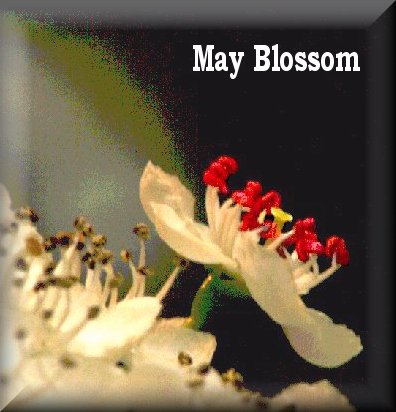
- Webmaster